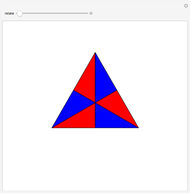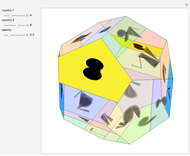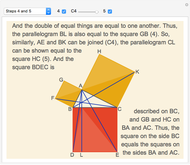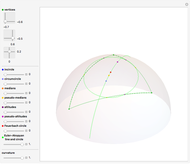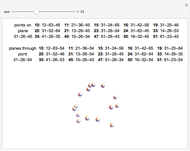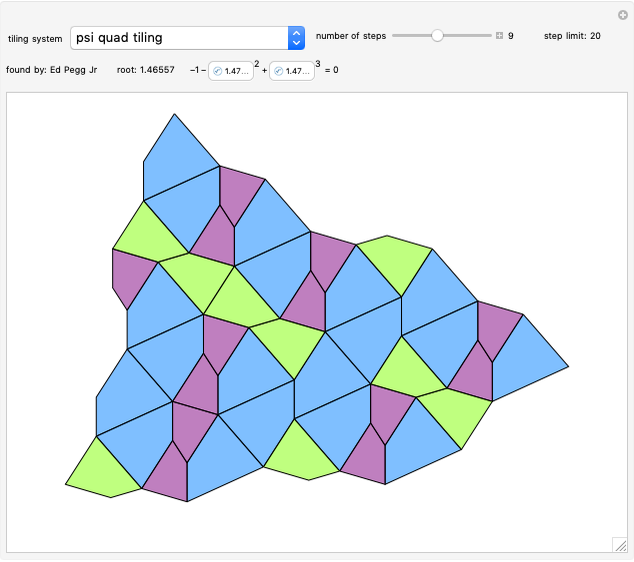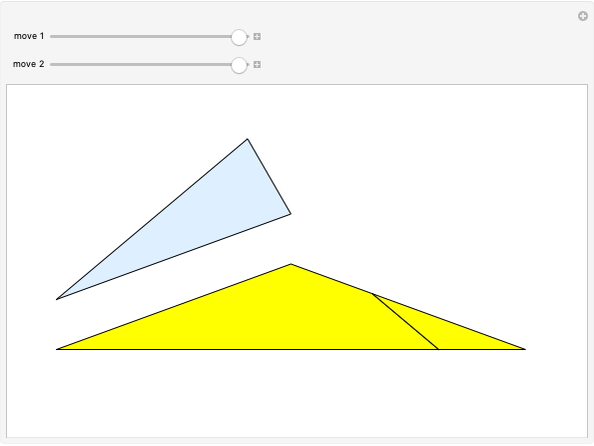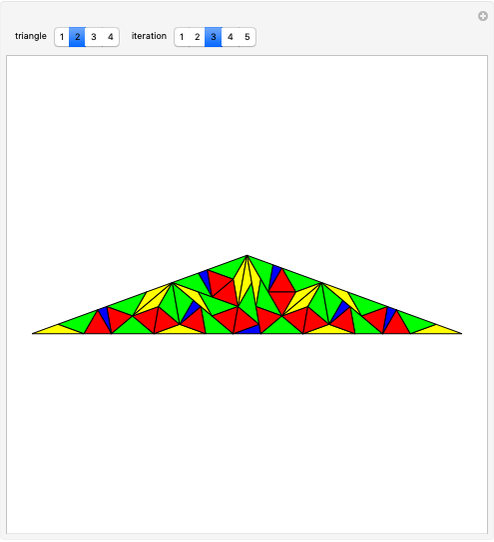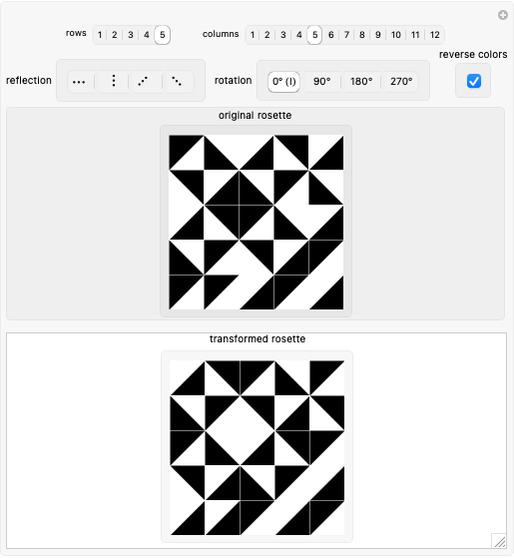Symmetries and Antisymmetries of Truchet Rosettes

Requires a Wolfram Notebook System
Interact on desktop, mobile and cloud with the free Wolfram Player or other Wolfram Language products.
In the beginning of the eighteenth century, the French priest Sébastien Truchet explored patterns made with a simple motif: a square divided by one of its diagonals into two colored triangles, now known as a Truchet tile.
[more]
Contributed by: Andreia Hall, António Pereira, João Nunes and Paolo Vettori (June 13)
Open content licensed under CC BY-NC-SA
Details
References
[1] A. Hall, P. Almeida and R. Teixeira, "Exploring Symmetry in Rosettes of Truchet Tiles," Journal of Mathematics and the Arts, 13(4), 2019 pp. 308–335. doi:10.1080/17513472.2019.1581963.
[2] L. Radovic and S. Jablan, "Antisymmetry and Modularity in Ornamental Art," Bridges: Mathematical Connections in Art, Music, and Science (R. Sarhangi and S. Jablan, eds.), Winfield, KS: Bridges Conference, 2001 pp. 55–66. archive.bridgesmathart.org/2001/bridges2001-55.html.
[3] C. S. Smith and P. Boucher, "The Tiling Patterns of Sebastien Truchet and the Topology of Structural Hierarchy," Leonardo, 20(4), 1987 pp. 373–385. doi:10.2307/1578535.
Snapshots
Permanent Citation






